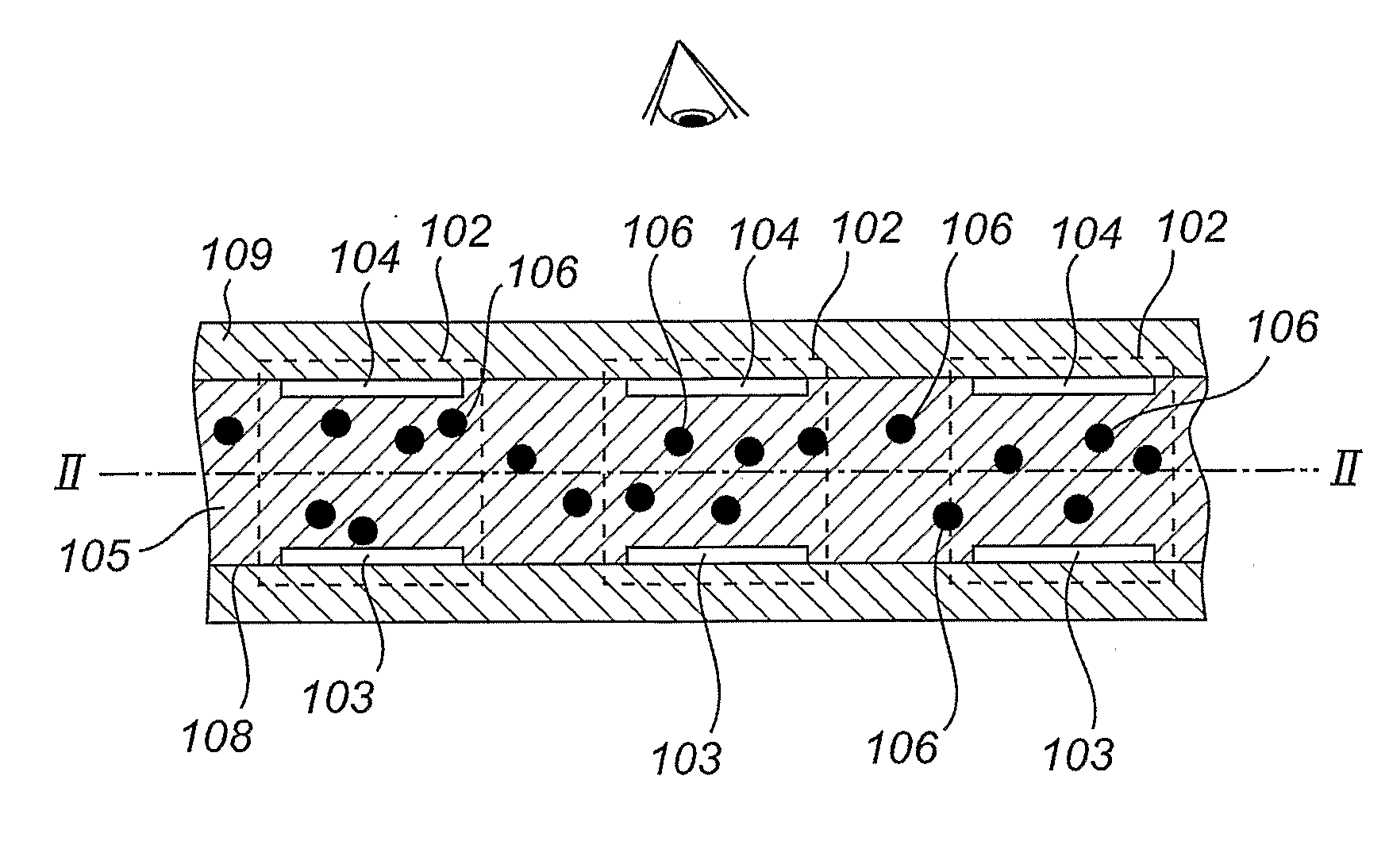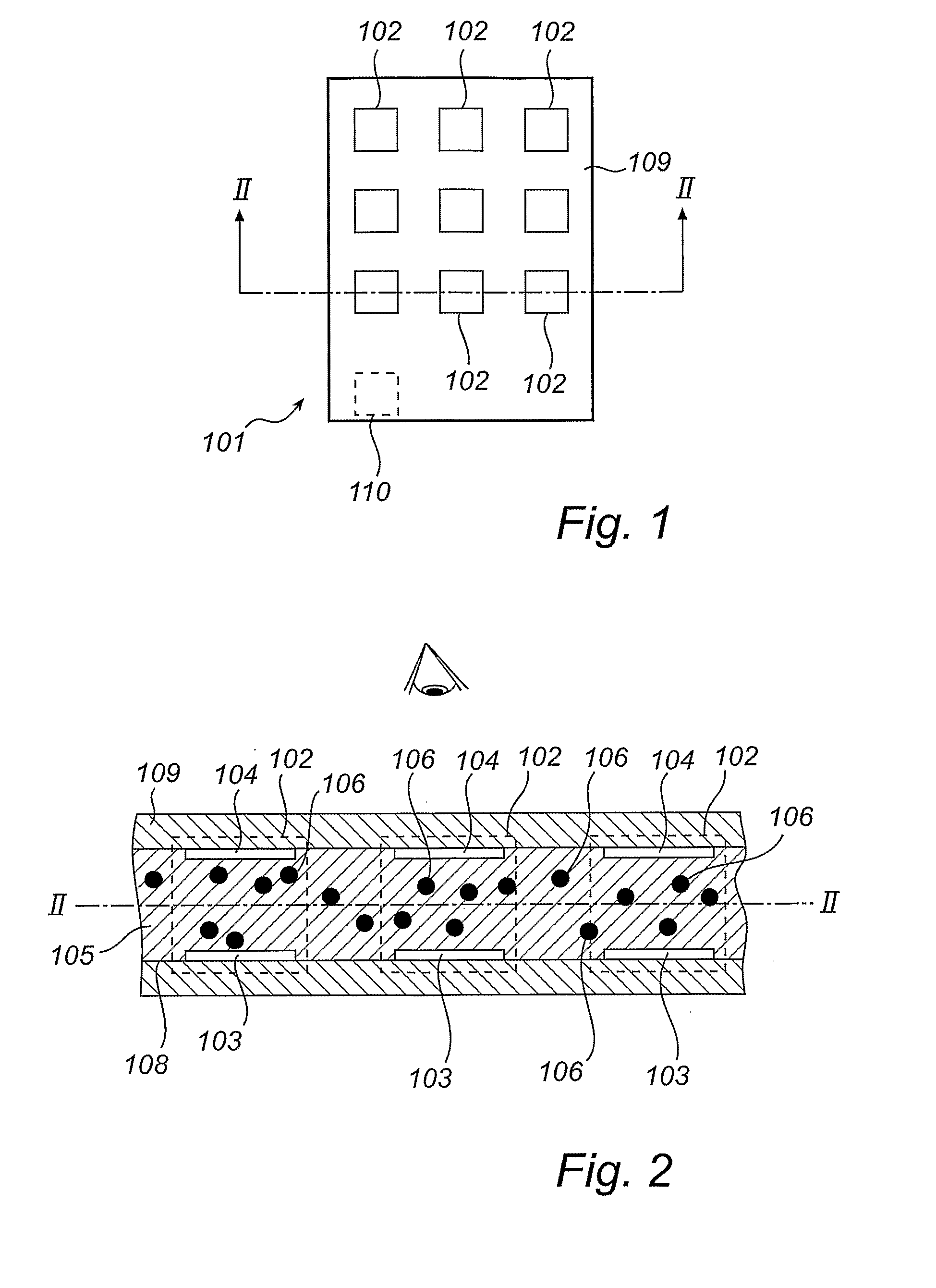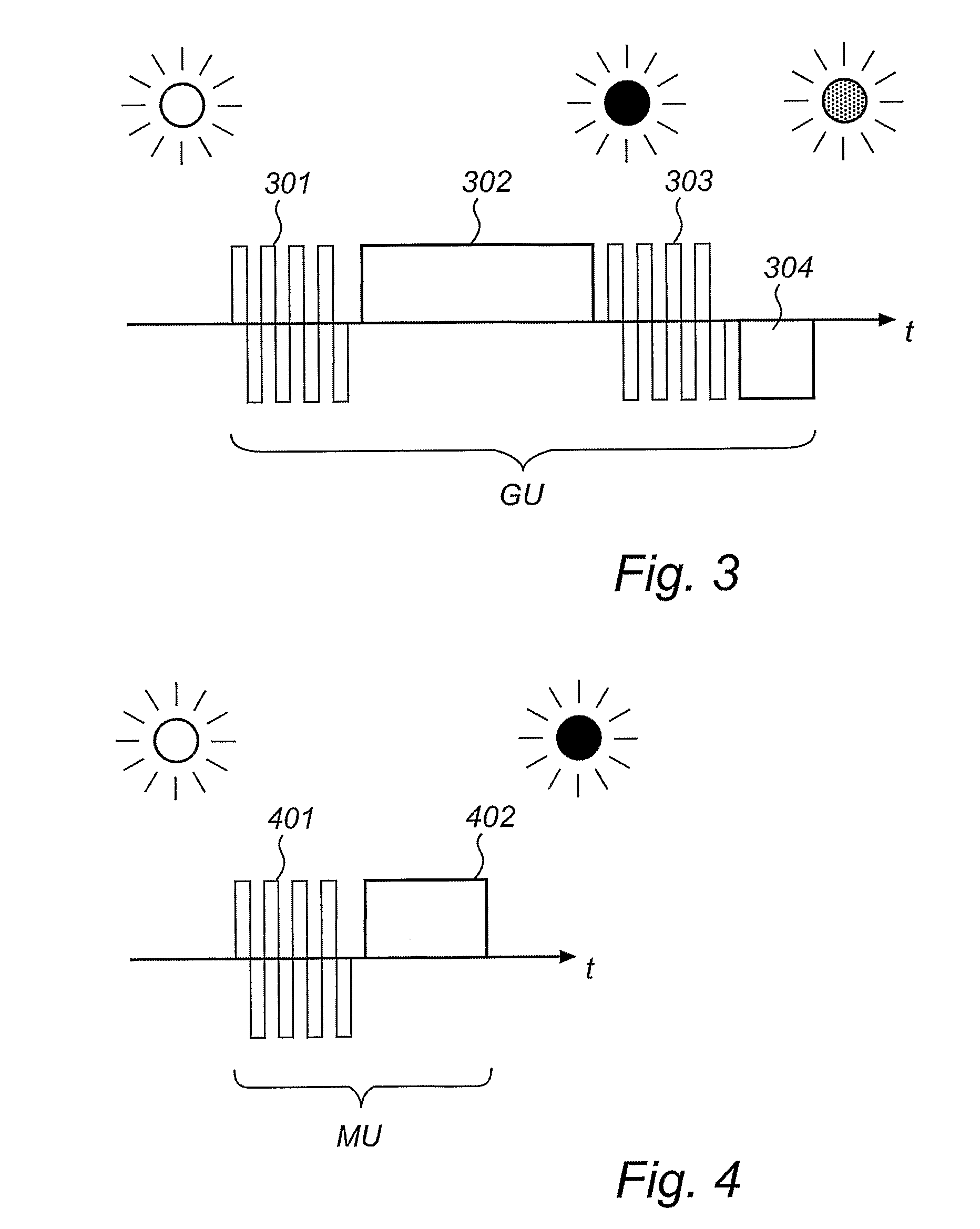Transition between grayscale an dmonochrome addressing of an electrophoretic display
a technology of dmonochrome addressing and transient addressing, applied in the field of electrophoretic display, can solve the problems of reducing the overall performance of the display and increasing the updating time, and achieve the effect of reducing the updating time and simplifying the drive wave form
- Summary
- Abstract
- Description
- Claims
- Application Information
AI Technical Summary
Benefits of technology
Problems solved by technology
Method used
Image
Examples
embodiment 1
GU to MU Transition via an Initialise Mode
[0053] A first method to enable the GU to MU transition is to ensure that the display is initialised before the MU image is written. Initialisation essentially removes all prior history in the display, for example by repeatedly switching the entire display between the two extreme states. This embodiment is actually described above with reference to FIG. 6 and transition drive signal 602.
[0054] Whilst this approach will remove the problems of image retention, it will not solve the remnant DC problemdescribed above. In order to reduce this problem, it is preferred to begin the initialisation sequence in such a way that the DC component is similar in both MU and GU mode. Such methods will be described in the following embodiments.
embodiment 2
Transition with First MU Image Written with GU Waveform
[0055] A second method to enable the GU to MU transition is to write the first monochrome image of the MU series using the GU waveform. This has the advantage that all gray pixels are made either black or white according to the well defined GU waveforms, and therefore no additional artefacts will be introduced. Of course, the image update time will be longer than in MU mode (but shorter than in GU as there will be no transitions from e.g. white to dark grey or black to light grey—these are generally the longest waveforms).
[0056] Once all pixels are in the black or white state, image update can proceed according to the shorter MU waveforms.
[0057] This embodiment is thus recognized in that swithing from the grayscale updating mode to the monochrome updating mode is always accompanied by the use of the grayscale drive signal that puts the pixel into either of its extreme states.
[0058] This approach will remove the problems of i...
embodiment 3
Transition with Addition of a DC Voltage Pulse to the First MU Waveform
[0059] A third method to enable the GU to MU transition is to incorporate additional voltage pulses to the MU waveforms of the first monochrome image of the MU series in order to remove the DC voltage induced in the final image of the GU sequence.
[0060] This can be achieved for example for the waveform shown in FIG. 7, where a transition from a dark grey pixel (from the last GU waveform) to a white pixel (in the first MU waveform) is rendered. In this embodiment, for a 4 grey level display, 16 additional waveforms could be stored in a separate look-up-table (for example called MU′) to facilitate this transition.
[0061] Now, the voltage used to write in the dark grey pixel in the GU image is removed by the short voltage pulse prior to the normal MU waveform. This approach will remove the problems of image retention and will reduce the DC balancing problem described above using a drive waveform which is shorter t...
PUM
 Login to View More
Login to View More Abstract
Description
Claims
Application Information
 Login to View More
Login to View More - R&D
- Intellectual Property
- Life Sciences
- Materials
- Tech Scout
- Unparalleled Data Quality
- Higher Quality Content
- 60% Fewer Hallucinations
Browse by: Latest US Patents, China's latest patents, Technical Efficacy Thesaurus, Application Domain, Technology Topic, Popular Technical Reports.
© 2025 PatSnap. All rights reserved.Legal|Privacy policy|Modern Slavery Act Transparency Statement|Sitemap|About US| Contact US: help@patsnap.com



